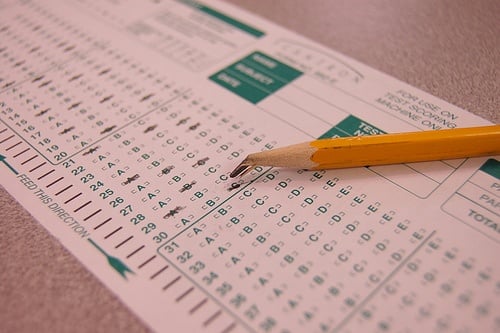
The first step in preparing for the SAT is learning basic info about the test. If you’ve decided to take the SAT, or even if you’re still choosing between the SAT and ACT, it’s important to understand how the test is scored.
I’ll give you a crash course in the SAT and its score ranges before talking in more detail about what these scores actually mean—what’s good, what’s bad, and what’s average.
SAT: The Basics
The SAT is taken by over 2 million students a year and is accepted by pretty much every college and university. Students submit their test scores as part of their college applications; admissions officers use the scores to help determine whether students are eligible candidates. The higher your score range, the more academically prepared you'll seem to admissions officers.
The SAT Score Range

Interestingly enough (or maybe not), SAT scores don't start at zero.
The SAT comprises two mandatory sections, Evidence-Based Reading & Writing and Math.Each section has a minimum score of 200 points and a maximum score of 800 points. In total, then, the lowest score you could receive on the SAT is 400, whereas the highest possible score is 1600.
The essay is scored a bit differently. Two scorers award 1-4 points on three different dimensions: reading, analysis, and writing. These aren't factored into your score out of 1600.
As it turns out, fewer people get the lowest possible score (400) than get perfect scores (1600).
Understanding SAT Scores
You don’t just want to know about the SAT score range—you’re also likely interested in what these scores actually mean. What’s good? Bad? Average? Over 2 million students take SAT every year, so we have a lot of data on how people tend to perform.
Your definition of good, bad, and average scores will depend on your comparison group — whether you’re concerned about how people perform at the national level, at your high school, or at your target colleges.
National SAT Performance
I'll start with data on how all SAT test-takers perform so you can get an idea of score distribution at a national level:
- The average composite SAT score is about 1000 points out of a possible 1600.
- The 75th percentile—the score that's higher than 75% of other test-takers' scores—is 1200 points. Scores at the 75th percentile and above (1200-1600 points) are generally considered to be excellent.
- The 25th percentile—the score that's lower than 75% of other test-takers' scores—is 840. Scores at the 25th percentile and below (400-840 points) are generally considered to be low.
High School and Target College SAT Performance
Although it's helpful to compare your SAT scores to the national average, it's also important to consider other comparison groups. Knowing how your peers tend to perform, in addition to knowing how students at your target colleges tend to perform, will help you come up with a goal score to shoot for. You'll also be better able to compile lists of target, reach, and safety schools.
Your peer and target college SAT performance will depend on two obvious factors: where you currently go to high school and where you hope to go to college. Although the process may sound daunting, gathering this SAT score performance information isn't too difficult.
For instructions on getting information on how your classmates tend to score, check out our guide on excellent SAT scores. To learn about how to get SAT information for your target schools, read our post on setting a goal score. You can also google "[name of college] PrepScholar admissions requirements."
Not too hard, right?
What's Next?
Now that you know all about the SAT score range, you'll want to bring up your composite score as much as possible. Learn more about studying for the SAT, whether you're in a rush to increase your score or have plenty of time to prepare.
Want to earn a perfect score? Read our famous guide to earning a 1600 on the SAT.











